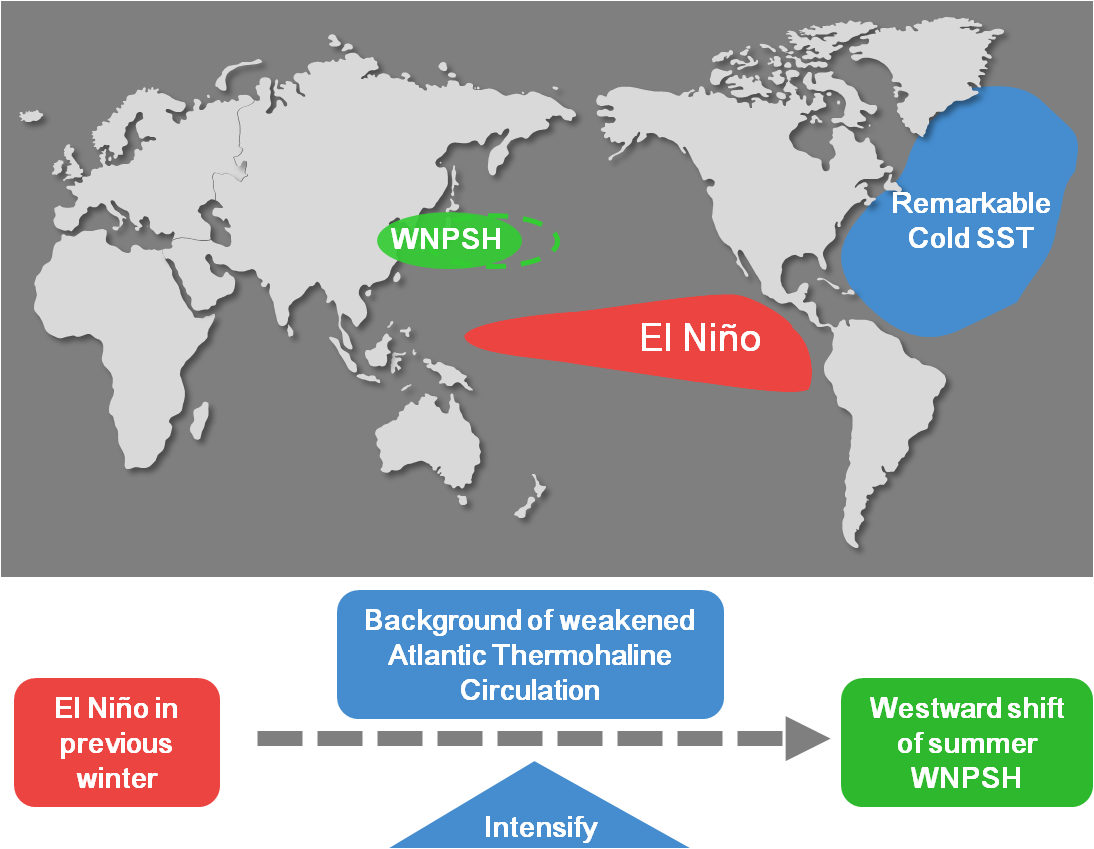Atlantic ocean Modulates the Relationship between El Nino and Western North Pacific Subtropical High
Date:2015-02-06
Floods seriously threaten the national economy and safety and therefore it's important to predict summer climate. Floods in the Yangtze River basin are mainly caused by the westward shifting of the western North Pacific subtropical High (WNPSH) during El Ni?o decaying summer. The strong 1997/98 El Ni?o induced a remarkable westward shifting of the WNPSH in the following summer and resulted in the extreme flood in 1998 summer. Therefore, the El Ni?o signal is leading the WNPSH, as well as the floods in the Yangtze River Basin. The relationship between El Ni?o and WNPAC is useful for the prediction of summer climate. However, this relationship is unstable. It is enhanced after late 1970s, but weakened during recent two decades. The reason for the decadal variability in the relationship between El Ni?o and WNPSH is still uncertain.
Chen Wei and Lu Riyu from the Institute of Atmospheric Physics (IAP/CAS) and Buwen Dong from Reading university, UK investigated the relationship between El Ni?o and WNPSH using a water-hosing experiment simulating the weakened Atlantic Thermohaline circulation (THC). Compared with observations, the weakened THC leads to a significant cold sea surface temperature (SST) over the North Atlantic Ocean. The results suggested that the relationship between El Ni?o and WNPSH is intensified under the weakened THC (e.g., the cold SST in the North Atlantic), and that the intensification is due to greater climatological humidity over the western Pacific, which enhances the sensitivity of WNPAC to the El Ni?o. On the other side, this intensification is also in response to the increased amplitude and frequency of El Ni?o under the weakened THC. Additionally, the observational evidence further indicated a modulation of the Atlantic Multidecadal Oscillation (AMO) on the El Ni?o-WNPSH relationship, which confirmed the model results.
Chen and Lu suggested impacts of Atlantic SST on the relationship between El Ni?o and WNPSH, indicating that attentions should be paid on this non-local mechanism, besides the local SST changes. On the decadal timescale, the El Ni?o could be more important to the prediction of summer climate over the East Asia during a negative phase of AMO.
The paper has been published in Journal of Geophysical Research: Atmospheres in 2014.

Citation: Chen, W., R. Lu, and B. Dong (2014), Intensified anticyclonic anomaly over the western North Pacific during El Ni?o decaying summer under a weakened Atlantic thermohaline circulation, J. Geophys. Res. Atmos., 119, doi:10.1002/2014JD022199.
Download: http://onlinelibrary.wiley.com/doi/10.1002/2014JD022199/full
